-
 Bitcoin
Bitcoin $107,443.3008
-1.17% -
 Ethereum
Ethereum $2,494.2503
-0.63% -
 Tether USDt
Tether USDt $1.0003
0.00% -
 XRP
XRP $2.2496
2.23% -
 BNB
BNB $658.7569
0.63% -
 Solana
Solana $154.9826
1.94% -
 USDC
USDC $1.0000
0.01% -
 TRON
TRON $0.2799
1.07% -
 Dogecoin
Dogecoin $0.1659
-1.78% -
 Cardano
Cardano $0.5745
0.25% -
 Hyperliquid
Hyperliquid $39.7005
0.13% -
 Bitcoin Cash
Bitcoin Cash $519.5989
3.78% -
 Sui
Sui $2.7874
-2.40% -
 Chainlink
Chainlink $13.3762
-1.69% -
 UNUS SED LEO
UNUS SED LEO $9.0784
-0.64% -
 Avalanche
Avalanche $17.9846
-2.81% -
 Stellar
Stellar $0.2390
-0.06% -
 Toncoin
Toncoin $2.9028
0.25% -
 Shiba Inu
Shiba Inu $0.0...01147
-2.17% -
 Litecoin
Litecoin $86.6956
-1.27% -
 Hedera
Hedera $0.1508
-0.50% -
 Monero
Monero $322.6222
3.26% -
 Polkadot
Polkadot $3.4124
-2.99% -
 Dai
Dai $0.9999
0.00% -
 Bitget Token
Bitget Token $4.5434
-1.97% -
 Ethena USDe
Ethena USDe $1.0002
0.00% -
 Uniswap
Uniswap $7.1562
-2.61% -
 Aave
Aave $275.8830
-1.02% -
 Pepe
Pepe $0.0...09790
-4.04% -
 Pi
Pi $0.5018
-5.09%
What is the environmental impact of an nft?
NFTs, while popular in digital art and collectibles, have drawn criticism for their environmental impact due to the energy-intensive proof-of-work blockchains like pre-merge Ethereum.
Jul 01, 2025 at 05:49 am
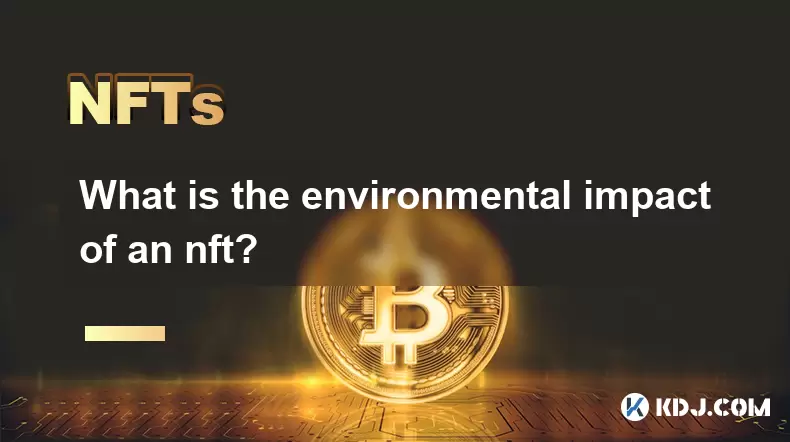
Understanding the Environmental Impact of NFTs
Non-Fungible Tokens (NFTs) have become a significant part of the digital economy, especially within the realms of art, collectibles, and virtual assets. However, their environmental impact has raised concerns due to the energy consumption associated with blockchain technology. The primary issue lies in the proof-of-work consensus mechanism used by certain blockchains like Ethereum, which was the dominant platform for NFTs before its transition to proof-of-stake.
Ethereum's legacy proof-of-work system required miners to solve complex cryptographic puzzles to validate transactions, including those involving NFTs. This process consumed large amounts of electricity, leading to carbon emissions comparable to some small countries.
Energy Consumption Per Transaction
Each NFT transaction—whether minting, buying, or transferring—requires computational work on the blockchain. Before Ethereum’s merge to proof-of-stake, one NFT transaction could consume as much energy as an average U.S. household uses in a day or more. This high energy usage is primarily due to network congestion and the inefficient nature of proof-of-work mining.
- Minting an NFT involves creating a new token on the blockchain, which requires gas fees and validation across multiple nodes.
- Transferring ownership or listing an NFT on a marketplace also triggers additional smart contract interactions, further increasing energy use.
- Bidding or purchasing an NFT can involve multiple failed transactions, each consuming energy even if they don’t succeed.
The Role of Blockchain Platforms
Not all blockchains are created equal when it comes to energy efficiency. While older platforms like pre-merge Ethereum were criticized for high energy consumption, newer blockchains such as Tezos, Flow, and Solana were designed with lower energy footprints in mind. These networks use proof-of-stake or other consensus mechanisms that drastically reduce power usage.
- Tezos utilizes a liquid proof-of-stake model, where validators are chosen based on the number of tokens they hold and are willing to "stake" as collateral.
- Flow, developed by Dapper Labs, employs a multi-role architecture that separates tasks among different node types to enhance scalability and efficiency.
- Solana combines proof-of-stake with a unique timestamping method called proof-of-history, enabling faster and more energy-efficient transactions.
Carbon Footprint Variability
The actual carbon footprint of an NFT varies widely depending on several factors: the blockchain used, the time of transaction, and network congestion levels. For instance, an NFT minted on Ethereum during peak hours will have a higher carbon footprint than one created during off-peak times.
- Gas prices fluctuate based on demand, so periods of high activity lead to increased energy consumption per transaction.
- Different wallets and marketplaces may batch transactions or use layer-2 solutions, reducing individual energy costs.
- Some platforms now offer carbon offsetting options, allowing creators and buyers to mitigate environmental impact through donations or credits.
Mitigation Strategies and Alternatives
As awareness of environmental concerns grows, many projects and marketplaces are adopting greener alternatives. One of the most effective strategies is migrating from proof-of-work to proof-of-stake blockchains, which significantly reduces energy consumption.
- Marketplaces like OpenSea and Rarible now support multiple chains, giving users the option to choose low-energy platforms.
- Layer-2 scaling solutions such as Polygon provide off-chain processing, settling final transactions on the mainnet with minimal energy cost.
- Artists and collectors can opt for eco-friendly NFT platforms, such as KnownOrigin or Hic et Nunc, built specifically on green blockchains.
Frequently Asked Questions
Q: Can I check the environmental impact of my NFT?
A: Yes, tools like CryptoSlam or specialized calculators allow you to estimate the carbon footprint of your NFT based on blockchain data and gas usage.
Q: Are all NFTs bad for the environment?
A: No, not all NFTs have a high environmental impact. Those created on energy-efficient blockchains or using layer-2 solutions can be nearly carbon-neutral.
Q: What does “minting” mean in the context of NFTs?
A: Minting refers to the process of creating a unique digital token on the blockchain, which represents ownership of a specific asset like artwork or music.
Q: How do carbon offsets work for NFTs?
A: Carbon offsetting involves investing in environmental projects that remove or reduce greenhouse gases equivalent to the emissions caused by an NFT transaction.
Disclaimer:info@kdj.com
The information provided is not trading advice. kdj.com does not assume any responsibility for any investments made based on the information provided in this article. Cryptocurrencies are highly volatile and it is highly recommended that you invest with caution after thorough research!
If you believe that the content used on this website infringes your copyright, please contact us immediately (info@kdj.com) and we will delete it promptly.
- Solana, Pepe Coin, Crypto Meme Mania: What's Hot and What's Not?
- 2025-07-01 19:10:12
- Bitcoin Cash Price Pump: Unpacking the Reasons Behind the Surge
- 2025-07-01 18:30:12
- Dogecoin's Wild Ride: Rally Potential Amidst Investor Panic?
- 2025-07-01 19:10:12
- Algorand, Wormhole, and Interoperability: A New Dawn for DeFi
- 2025-07-01 19:15:12
- CATL's Indonesian Battery Blitz: A 6 Billion Dollar Bet on the Future
- 2025-07-01 19:20:14
- Bitcoin, PEP-20, and the Token Standard Revolution: Is Bitcoin Pepe the Next Big Thing?
- 2025-07-01 18:30:12
Related knowledge
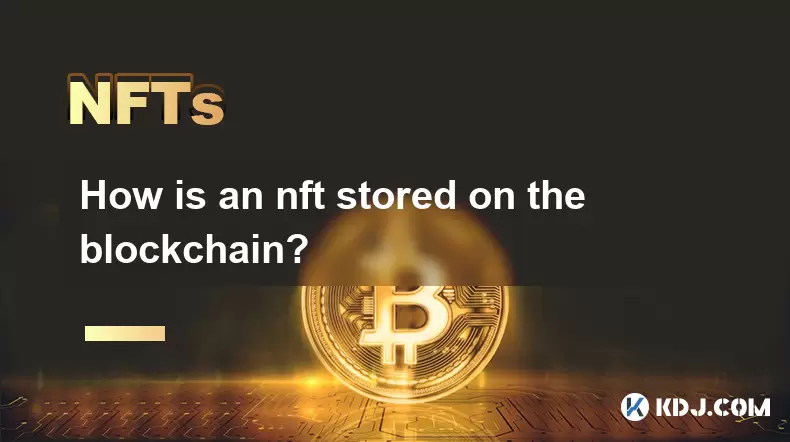
How is an nft stored on the blockchain?
Jul 01,2025 at 04:07am
How Is an NFT Stored on the Blockchain?Non-Fungible Tokens (NFTs) have revolutionized how digital assets are owned, verified, and transferred. Understanding how an NFT is stored on the blockchain provides clarity on its uniqueness, immutability, and traceability. Understanding the Basic Structure of an NFTAn NFT is a unique token that represents ownersh...
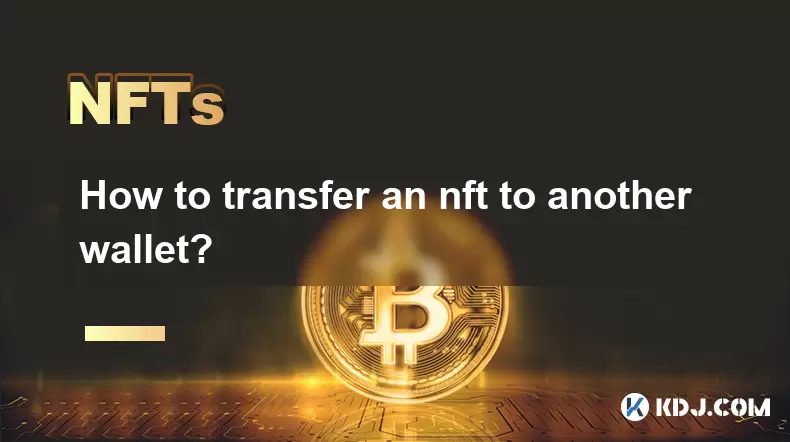
How to transfer an nft to another wallet?
Jul 01,2025 at 10:21am
Understanding the Basics of NFT TransfersTransferring an NFT (Non-Fungible Token) from one wallet to another is a common operation in the blockchain space. Before proceeding, it's crucial to understand what an NFT represents: a unique digital asset stored on a blockchain, typically Ethereum or other compatible chains like Binance Smart Chain or Solana. ...
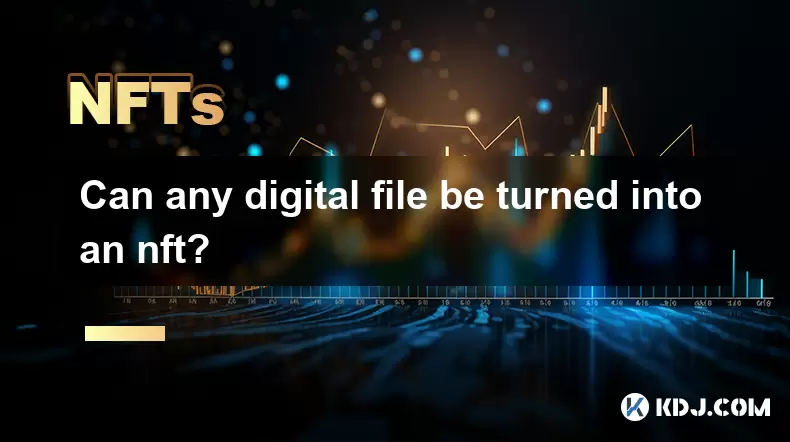
Can any digital file be turned into an nft?
Jul 01,2025 at 07:00am
Understanding the Concept of NFTsAn NFT (Non-Fungible Token) is a unique digital certificate of ownership stored on the blockchain. Unlike cryptocurrencies such as Bitcoin or Ethereum, which are fungible and interchangeable, NFTs represent one-of-a-kind assets that cannot be replicated or replaced. These tokens can represent various types of digital fil...

How to analyze an nft project's roadmap?
Jul 01,2025 at 12:01pm
What is an NFT Project Roadmap?An NFT project roadmap serves as a strategic plan outlining the development goals, milestones, and timelines for a non-fungible token initiative. It typically includes short-term and long-term objectives, key deliverables, team updates, partnerships, and community engagement strategies. A well-structured roadmap helps inve...
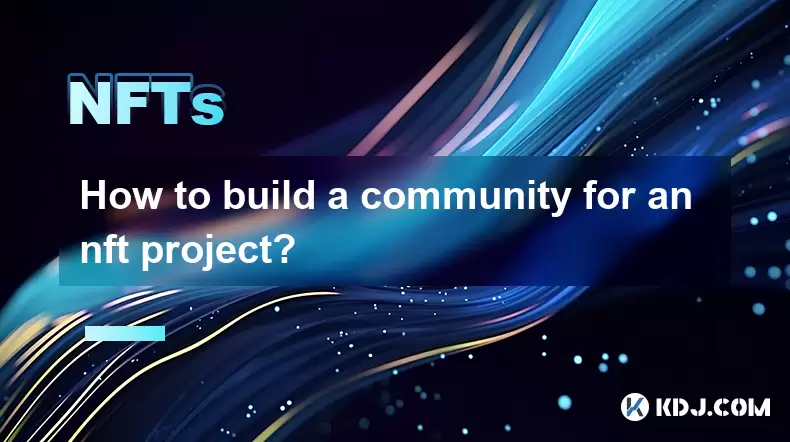
How to build a community for an nft project?
Jul 01,2025 at 07:28pm
Understanding the Core of an NFT CommunityBuilding a community around an NFT project starts with understanding what makes these communities thrive. Unlike traditional online groups, NFT communities are built on shared ownership, digital identity, and collective value. The foundation lies in creating a sense of belonging and purpose that goes beyond the ...
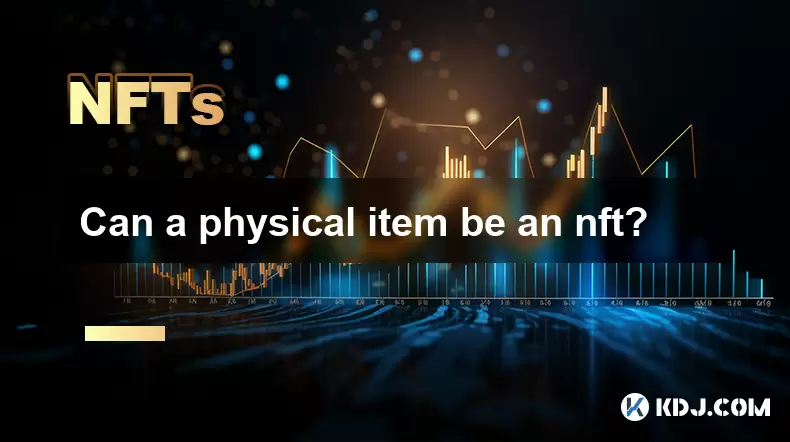
Can a physical item be an nft?
Jul 01,2025 at 06:07am
Understanding the Concept of NFTsAn NFT (Non-Fungible Token) is a unique digital asset that represents ownership of a specific item or content on the blockchain. While many people associate NFTs with digital art, music, or virtual collectibles, the question arises: Can a physical item be an NFT? The short answer is yes — but with important distinctions....

How is an nft stored on the blockchain?
Jul 01,2025 at 04:07am
How Is an NFT Stored on the Blockchain?Non-Fungible Tokens (NFTs) have revolutionized how digital assets are owned, verified, and transferred. Understanding how an NFT is stored on the blockchain provides clarity on its uniqueness, immutability, and traceability. Understanding the Basic Structure of an NFTAn NFT is a unique token that represents ownersh...

How to transfer an nft to another wallet?
Jul 01,2025 at 10:21am
Understanding the Basics of NFT TransfersTransferring an NFT (Non-Fungible Token) from one wallet to another is a common operation in the blockchain space. Before proceeding, it's crucial to understand what an NFT represents: a unique digital asset stored on a blockchain, typically Ethereum or other compatible chains like Binance Smart Chain or Solana. ...

Can any digital file be turned into an nft?
Jul 01,2025 at 07:00am
Understanding the Concept of NFTsAn NFT (Non-Fungible Token) is a unique digital certificate of ownership stored on the blockchain. Unlike cryptocurrencies such as Bitcoin or Ethereum, which are fungible and interchangeable, NFTs represent one-of-a-kind assets that cannot be replicated or replaced. These tokens can represent various types of digital fil...

How to analyze an nft project's roadmap?
Jul 01,2025 at 12:01pm
What is an NFT Project Roadmap?An NFT project roadmap serves as a strategic plan outlining the development goals, milestones, and timelines for a non-fungible token initiative. It typically includes short-term and long-term objectives, key deliverables, team updates, partnerships, and community engagement strategies. A well-structured roadmap helps inve...

How to build a community for an nft project?
Jul 01,2025 at 07:28pm
Understanding the Core of an NFT CommunityBuilding a community around an NFT project starts with understanding what makes these communities thrive. Unlike traditional online groups, NFT communities are built on shared ownership, digital identity, and collective value. The foundation lies in creating a sense of belonging and purpose that goes beyond the ...

Can a physical item be an nft?
Jul 01,2025 at 06:07am
Understanding the Concept of NFTsAn NFT (Non-Fungible Token) is a unique digital asset that represents ownership of a specific item or content on the blockchain. While many people associate NFTs with digital art, music, or virtual collectibles, the question arises: Can a physical item be an NFT? The short answer is yes — but with important distinctions....
See all articles

























































































